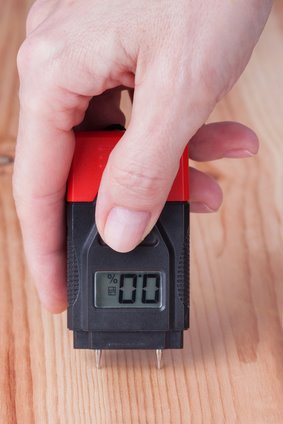
Wooden pallets are used to move goods all over the world, but they’re not without the occasional concern. One of the main things about which businesses need to be informed with regard to their wood pallet fleet is the wood’s moisture content. The way it works is simple: as the relative humidity of the air changes with the seasons, the moisture content in the wood changes. This becomes a concern because fluctuations in moisture will cause the wood to expand and contract. Over time, the wood — and the pallets — can warp, become less structurally sound, and eventually rot.
Of course, wood is a naturally-derived material, so even the best heat treated wood is going to take on some moisture. Additionally, how much a piece of wood expands and contracts is largely dependent on which species of tree it’s from. However, there are measures that can be taken to minimize the amount of moisture in a piece of wood and, as a result, help pallets last longer.
Fortunately, knowing how much moisture is in a piece of wood doesn’t have to be a guessing game. Thanks to wood moisture meters, it’s easy to tell exactly how the atmospheric humidity has affected a pallet or other other wooden item. This is a device that’s sort of like a hygrometer, which measures the moisture content of the air, except it’s made specifically for measuring moisture in wood.
There are two main types of moisture meters. The first has small pins that push about a quarter of an inch into the wood. The second is pinless and simply measures the humidity of the wood’s surface. The pinless kind is most convenient, while moisture meters with pins are more accurate and reliable. Whichever you use, though, keeping close tabs on wooden pallet moisture can give you an early warning if a pallet is expanding or contracting too much to be able to handle a particular load.
There are two main ways to reduce the moisture content in wood, but only one of these methods is best for wooden pallets. First, wood can be dried in a kiln, which does reduce its humidity, but only enough to prevent warping. Heat treated wood is best for pallets, and in fact, international shipping regulations stipulate that all wooden pallets be heat treated and marked with the ISPM-15 wheat stamp.
The heat treating process not only dries wood out to help it keep its shape, but it also sterilizes the wood to kill any bacteria living within it. It’s an intense bake that raises the temperature of the wood to 56 degrees Celsius for 30 minutes — hotter and longer than a simple kiln dry.
When your company is ready to purchase a fleet of pallets, be sure to insist on pallets made with heat treated wood. HWP Herwood is the Northeast’s wooden pallet and crate supplier, and we can provide you with pallets that have been treated properly and meet all international standards. Give us a call at 1-800-884-4907, or fill out our online contact form. We can outfit your business with all the pallets you require, and you can rest assured that you’re getting a product that is fabricated at the highest standards and will last a long time.